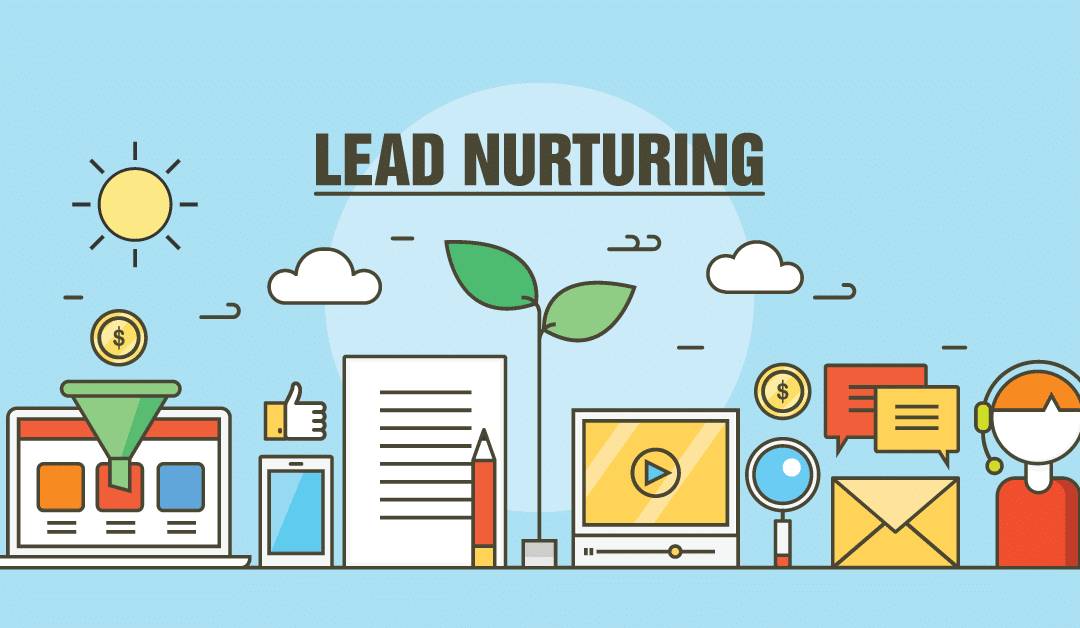Lead nurturing is the very foundation of a sales strategy. If you can’t nurture your leads, you can’t convert them. If you can’t convert your leads, you’ll lose profit and go out of business. For-profit organizations, large and small, spend most of their day figuring out ways to convert prospects into customers.
What is Lead Nurturing?
For those that aren’t familiar with marketing jargon, a lead is an individual that has an expressed interest in a product or service. Therefore, lead nurturing is the process of engaging a lead so that they can navigate through a sales funnel.
Every business has its own distinct sales funnel, but the most common aspects of every sales funnel are initial interest and checkout (purchase). Simply speaking, a typical sales funnel refines a lead that’s interested in what you have to offer into a customer.
If lead nurturing is this straightforward, why are so many businesses failing at it? That’s primarily because consumers are unpredictable and there are different ways to nurture a lead based on the industry you’re in.
For the most part, it’s difficult to convince a lead to spend their hard-earned money with your business. That’s why lead nurturing exists because you’ll have to do all the work to guide a lead to the point of making a purchase.
How Does Lead Nurturing Work?
Nurturing in its purest form means to care for something. For example, if you were tasked with growing a plant, you’ll need to guide it from a seed to a fully-grown plant. Of course, there are steps to nurturing a plant into its final stage. This is true with how leads work. The most common type of sales funnel that relies on the proper nurturing of leads is the “buyer’s journey.”
The buyer’s journey is a roadmap of the steps a buyer will take to transition from a prospect into a customer. Here are the stages of the buyer’s journey.
The Awareness Stage – In this stage, the buyer has an interest in a product or service. Simply put, he or she is “aware” that they have a need or want that needs to be filled.
The Consideration Stage – In this stage, the buyer has begun to find more information about how they can fill their need or want. The buyer is committed to finding the right solution and will evaluate their options.
The Decision Stage – The buyer has been fully informed of all their options and will decide.
Although the buyer’s journey is a marketing concept, it’s a process everyone uses every day. Hence, lead nurturing works by guiding leads through each step of the buyer’s journey, or whatever sales funnel your marketing and sales team uses. Lead nurturing is difficult because, as mentioned previously, consumers are unpredictable. One day, they may decide to purchase from you, but two weeks later they may forget you even existed.
The purpose of lead nurturing is to convert all leads, both simple and difficult ones. There is no one-size-fits-all approach to nurturing leads, nor is there is any universal method. If your business is struggling to properly convert leads, you could be suffering from these issues.
- You don’t have comprehensive information and data about your target audience.
- You give up too quickly on leads.
- You aren’t following up with your leads in the right way.
- You aren’t keeping your leads engaged.
- You’re not giving your leads enough information about your business.
- You’re not giving your leads what they want.
As you can see, there are a wide variety of reasons why your lead nurturing strategies aren’t working. To get your business back on track with converting leads successfully, continue to the next section to learn more about what you shouldn’t do concerning lead nurturing.
Avoid These Mistakes
Converting a lead is a delicate process that many businesses get wrong, time and time again. Overall, here are some lead nurturing mistakes you should stay away from.
Giving Up Prematurely – Just because someone expressed interest in your business and hasn’t called you back in a month doesn’t mean they aren’t still interested. Giving up on quality leads because of impatience is a great way to miss out on wide-open sales opportunities.
Skipping Right to the Purchase – Everyone is familiar with the approach salespeople use to sell products and services. These individuals have built a notorious reputation over the years for trying to make people commit to items they knew nothing about. Don’t fall into this same trap by skipping right to the purchase instead of providing your leads with information.
Using Jargon – Converting leads is a sales-related job. However, you should never talk like a salesperson while interacting with prospects. Not only do consumers rarely understand the jargon, but talking in circles around a prospect could confuse them and make them think twice about doing business with you.
Avoiding these mistakes can make the difference in practicing effective lead nurturing techniques.

